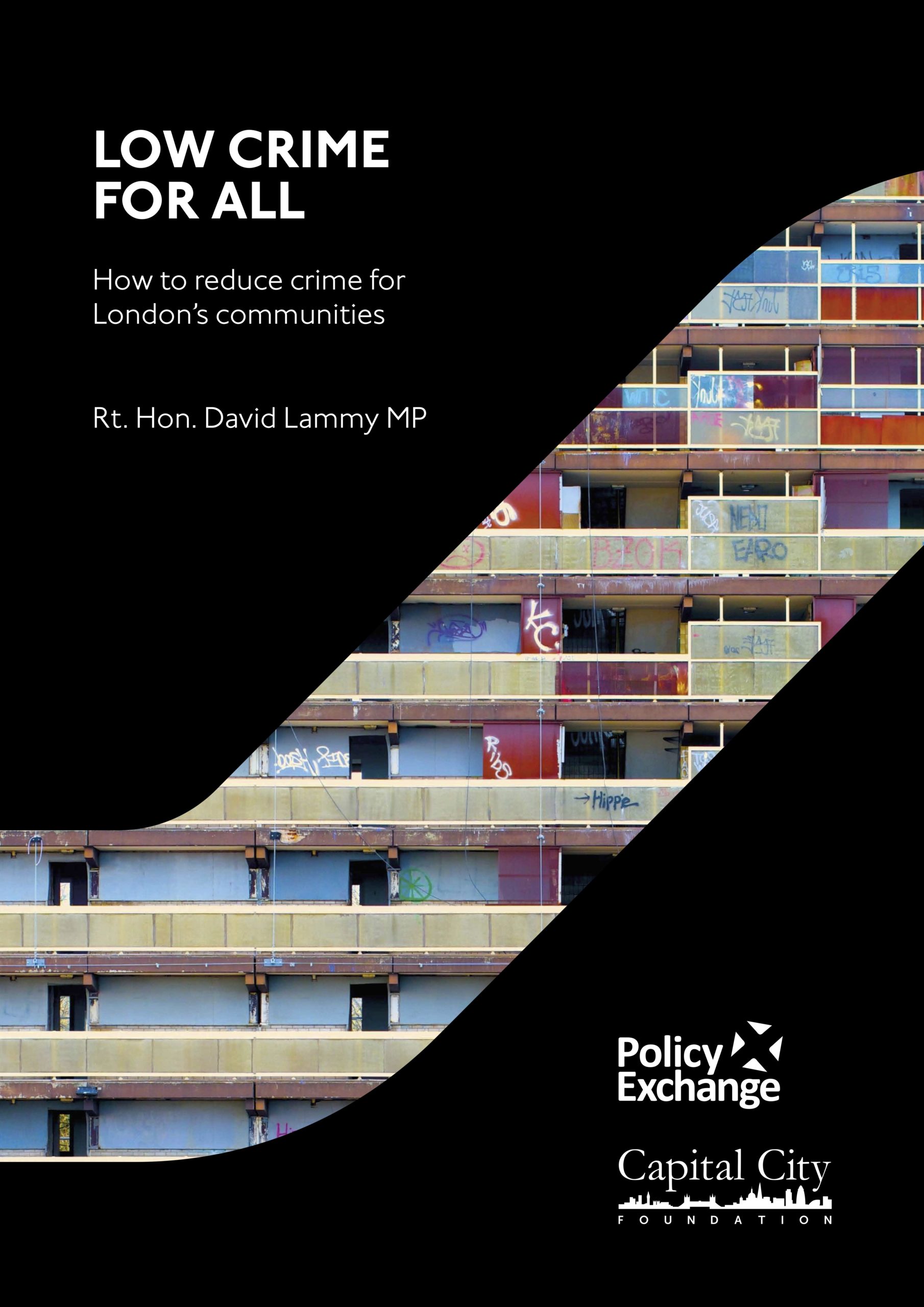
September 9, 2015
Low Crime for All: How to reduce crime for London’s communities
In a new report for Policy Exchange’s London-focused research unit – the Capital City Foundation – Rt Hon David Lammy, Member of Parliament for Tottenham, and candidate in the Primary to be the Labour Party’s nominee for the London Mayoral Election, makes the case for higher visibility, more targeted policing in London.
In Low Crime for All: How to reduce crime for London’s Communities, Lammy makes three key points about crime in London:
- We need a more visible Police force. The Police must radically improve their visibility in those parts of the capital where crime is highest. Lammy calls for an additional 2,400 Police (1,400 additional constables and 1,000 community support officers) to combat crime in London. The report highlights official figures which show that just 1 in 10 of Metropolitan Police officers are “visible and available” to the public at any one time, the 39th lowest score of the 43 forces in England and Wales. While it is not possible for all Police Officers to be visible and available at any one time there is scope to increase this score.
- High crime disproportionately hurts the most vulnerable. While crime has declined since it peaked in 1995, this has not occurred equally among all geographic areas and socio-economic groups. Crime is increasingly concentrated in more deprived areas and particularly affects those on low incomes. In London, residents of the 100 wards with the highest proportion of social housing suffer more than twice as much crime as residents of the 100 wards with the least social housing.
- High rates of crime should not be accepted – crime can be reduced further. The Mayor of London should replicate the sort of approach to fighting crime adopted in New York City, where supposedly ‘low level’ offences were policed proactively to challenge the culture of criminality and antisocial behaviour.
The report makes thirteen recommendations to address crime in London:
- The Metropolitan Police should increase the percentage of “visible and available” officers. Foot patrols are an important tool in fighting crime.
- As part of encouraging foot patrols, the Mayor of London should look closely at Metropolitan Police spending on Police cars, and, perhaps, sell some existing vehicles to reinvest in other means of crime prevention.
- The Mayor’s Office for Policing and Crime should attempt randomised controlled trials around London to gather evidence on which policing methods work best.
- More Police resources should be directly invested in crime hotspots, particularly those areas recently victimised.
- The Mayor of London should replicate the “Compstat” model in New York. At least once a fortnight, senior officers should go through crime statistics and hold borough commanders to account for any increase in crime rates or decrease in Police effectiveness.
- The Mayor of London, Transport for London and MOPAC should sustain a particular focus on crime on public transport.
- London local authorities should insist that new home developments incorporate “designing out crime” principles as part of the planning process.
- The Mayor of London’s environmental team should put the “greening of London” at its core, with a view to placing trees, bushes and hedges in the way of known areas of criminal activity.
- Tenants should have the right to request that their landlord install WIDE – Window locks, Internal lights on a timer, Deadlocks or Double door locks and External lights activated by a motion sensor – target hardening measures in their home. Landlords should be obliged to do this following any tenant’s victimisation.
- The Mayor’s Office for Policing and Crime could trial investing some of its budget in crime prevention by directly funding WIDE installation in the areas most consistently burgled as one of the randomised controlled trials mentioned in recommendation three.
- As part of MOPAC’s randomised controlled trials, the Metropolitan Police should roll out new technologies in some of the highest crime areas, comparing the results to areas of similar crime rates. The deployment of Smartwater shows how this can work in practice.
- The Mayor of London should work to ensure social housing providers offer optional and low cost home contents insurance to their tenants.
- The Metropolitan Police should offer subsidised housing in land it owns for rent or purchase by officers to encourage them to live in London.

